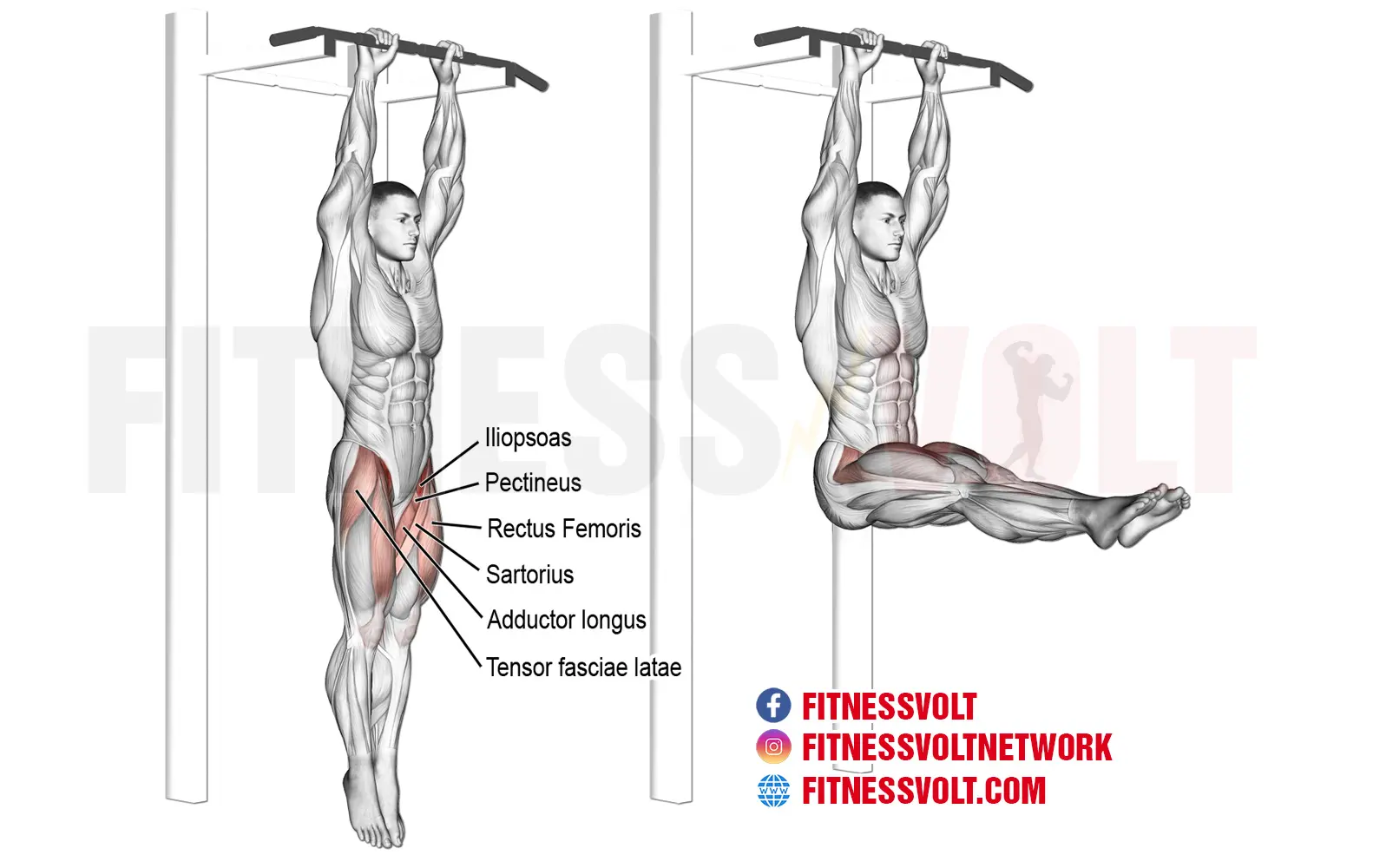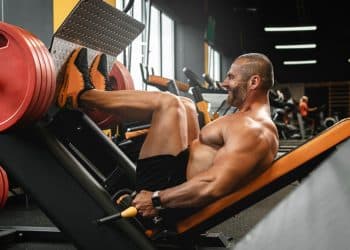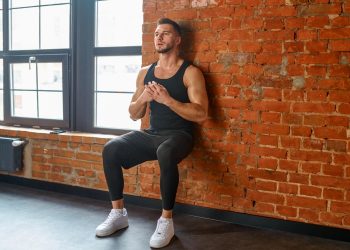The hanging leg raise is a staple in just about every serious core training routine. It’s a movement which is important for full core development and there are many variations.
Now, many people suffer from back pain and this is because they have weak core muscles. If you’re a sedentary person, then this makes matters even worse. So, training your core is recommended for everyone but it must be done in a safe manner.
And since the hip flexors are involved, it’s an additional functional benefit. So, we’ll discuss the muscle involved, benefits, exercise instructions and even variations to the hanging leg raise.
What Is The Hanging Leg Raise?
The hanging leg raise is pretty much a reverse crunch but it’s usually performed on a dip stand/Captain’s chair or by hanging from a bar. It’s a common exercise and you’ve probably seen people doing it at your local fitness club.
But any core movement like this is really designed to give you a stronger and better-looking pair of abdominals. It’s an isolation exercise, so the muscles are targeted directly.
A common way to train abs is to crunch your torso forward. But the hanging leg raise only involves the legs and hip flexors for the actual movement.
Level Up Your Fitness: Join our 💪 strong community in Fitness Volt Newsletter. Get daily inspiration, expert-backed workouts, nutrition tips, the latest in strength sports, and the support you need to reach your goals. Subscribe for free!
Target Muscles
The core muscles consist of the rectus abdominis (Abdominals), and the external and internal obliques. So these are the main target muscles during the hanging leg raise. (1)
These core muscles protect the spine, allow you to twist, bend, stabilize, etc.
And the hip flexor (Iliopsoas) muscles are heavily involved which are essential for walking, running, spine stabilization and trunk flexion. (2)
But, one thing about the hanging leg raise is that it actually stimulates the lower abdominal region a little more than the upper abdominals. And so this is a great way to improve muscle development in the lower midsection. (3)
Hanging Leg Raise Benefits
The core group of muscles plays an important role in daily activities and performance. Every physical movement which requires the entire body involves the core muscles. (4)
These are the main benefits of the hanging leg raise…
- Core/hip flexor strengthening
- Muscle development
- Reduced back pain
- Improved performance
- Stabilization
How to Do The Hanging Leg Raise
Most fitness centers should have a dip stand/Captain’s chair to perform this movement. But if not, you can hang from a bar and do this exercise just the same. You can use arm support straps if you don’t want to grip the bar.
No warm-ups are required with this exercise but proper form is necessary.
- Setup on a dip stand/Captain’s chair, so your back is against the padding and so that your arms are supporting your body weight.
- With knees slightly bent, raise both legs up until your upper legs are parallel to the floor, and contract your core muscles.
- Slowly lower them and repeat the movement for the desired number of repetitions.
Exercise tips:
- Do not swing or use momentum during the movement.
- Keep your core tight at all times to effectively the target muscles.
- Do not arch your back. It’s best to have a straight, upright posture or even lean forward slightly to prevent this from happening.
- If doing the hanging leg raise from a bar, make sure you don’t rock back and forth.
Common Variations
The beauty of an exercise is that there are a few different ways you can do them. Some people may find these variations more effective and comfortable for them.
Reverse Crunch
If you don’t want to do the hanging leg raise, or if you want to mix up your core training, then you can always just lie on the ground and do the reverse crunch. It’s essentially the same movement but you’re at a different angle.
Anyone with sufficient hip strength can perform this movement.
- Simply lie on the ground, bend your knees and bring them up toward your abs while contracting your core muscles.
Hanging straight-leg raise
This variation only requires your legs to be completely straight when performed on the Captain’s chair. It’s a little more challenging since the resistance extends out further from your body. In fact, one study showed it to create a rather large challenge for the abdominal wall with a decent amount of spine load as well. (5)
And therefore it’s a great advanced core exercise variation, but not for those with back issues.
Flat bench leg raise
This is a great variation since all you need is a bench.
- Sit perpendicular on the bench or on the end with legs hanging off and grip the sides. Lean back slightly and perform the leg raise with knees bent. You can lean your torso forward into the leg lift for more core activation.
Twisting hanging leg raise
This variation is effective for targeting the oblique muscles. You’ll use the same setup as the basic hanging leg raise. But when you lift both legs, you’ll twist your lower body to the right and left, alternating during each rep.
Similar movements are a very effective way to train the oblique muscles since they allow the trunk to twist. So, performing the exercise with the same function is going to be very beneficial. (6)
It’s a simple variation and is best for when you have the basic hanging leg raise movement down.
Bottom Line
The hanging leg raise is very effective for contributing to core development. It’s a great way to add variety to your training and it’s beneficial for your hip flexors as well.
So, try out the different variations and see which you like best. But start with the basic hanging leg raise since we believe it’s one of the best core exercises you can do.
It’s not only appealing for aesthetic and strength benefits, but you’ll improve core stabilization and functional movements which involve the lower body as well.









